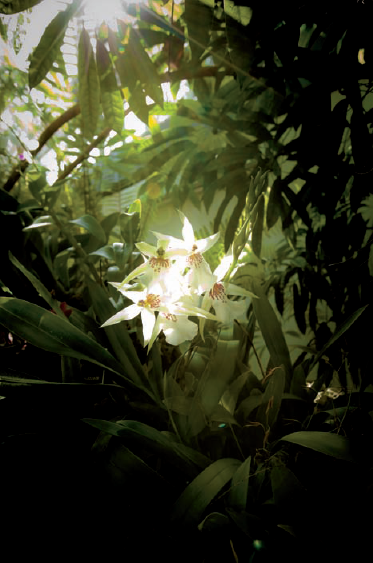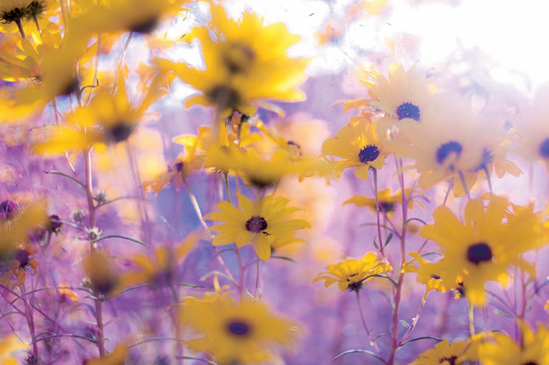
The United States Botanic Garden Conservatory seen from across Independence Ave. SW in Bartholdi Park. Taken at ISO 100, f/8, 1/100 second with a 28mm lens.
Amidst the often crowded and busy National Mall sits the United States Botanic Garden, a tranquil oasis filled with over 4,000 plants. The Botanic Garden is comprised of the Conservatory, the National Garden, and across Independence Avenue, Bartholdi Park. It is the oldest continually operating botanic garden in the U.S., having been open to the public beginning in 1850.
Tip
Check the Botanic Garden's Web site for details as to what is in bloom currently (www.usbg.gov).
The National Garden has a Butterfly Garden, First Ladies Water Garden (dedicated to the service performed by all the nation's first ladies), a regional garden showcasing plants native to the mid-Atlantic region, a small amphitheatre (which offers great views of the Capitol dome), and finally a Rose Garden. Across the street is Bartholdi Park, an area not visited by most tourists that showcases innovative gardening techniques and combinations of plants.
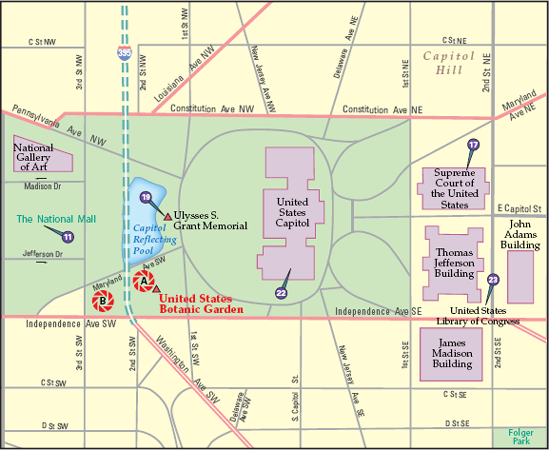
Figure 21.1. The best locations from which to photograph the United States Botanic Garden: (A) the Conservatory and (B) the National Garden. Nearby photo ops: (11) National Mall, (17) Supreme Court of the United States, (19) Ulysses S. Grant Memorial, (22) United States Capitol, and (23) United States Library of Congress.
The Botanic Garden gives you a rare opportunity to photograph all sorts of plants in a single place. There are continually changing exhibits and always something in bloom. Below are some highlights for getting some great images. You will definitely find some of your own as well.
Within the Conservatory, you find permanent as well as changing exhibits and always something beautiful to learn about and photograph. You are greeted inside the Conservatory by the Garden Court, which is extraordinary.
While here, explore many exhibits including Orchids (see Figure 21.1), Plant Exploration, Rare and Endangered, and of course the Canopy Walk (a raised walkway that allows you to take a bird's-eye view of the entire Jungle Room).
The National Garden's five areas were opened in 2006 and "provide living laboratories for environmental, horticultural, and botanical education," according to the U.S. Botanic Garden.
The National Garden and Bartholdi Park are filled with opportunities to make close-up shots (see Figure 21.2) as well as overall images of the gardens. It's a gorgeous setting for a stroll and to capture some spectacular gardens.
You can find hundreds if not thousands of potential "best shots" at the Botanic Garden. Where will yours be?
Often less is more with regards to camera equipment, and at the U.S. Botanic Garden traveling light is a great idea. Tripods are not allowed unless you get a permit first, but there is so much natural light that it's not necessary to use one. Because the walking paths are often rather narrow, especially within the Conservatory, it's requested that photographers be especially courteous to those walking around them while they take pictures.
Tip
To request a tripod permit and for more information, call the U.S. Botanic Garden at 202-225-8333.
Exploring the plants with a simple setup of a camera with a fixed (or prime) lens is an elemental way in which to photograph here. A simple camera, beautiful light, and beautiful plants make for some great photos. A 35mm or 50mm lens is good here (see Figure 21.3), and these often have closer focusing distances as compared to their longer brethren.
If you are using a zoom lens, practice keeping its zoom at one setting and move yourself to compose the image. Keeping to one zoom level helps to simplify the process of composing a photo and lets you concentrate on subtleties within the photo such as elements in the foreground and background. Of course more experienced photographers may be comfortable using both at the same time as they compose an image.
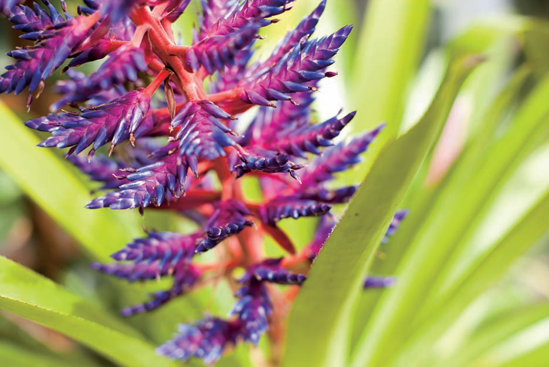
Figure 21.4. A blue tango, part of the bromeliad family, taken in a temporary exhibit of bromeliads in the Conservatory's south lobby (see A on the map). Taken at ISO 200, f/2, 1/500 second with a 50mm lens.
Also, note that all lenses have a minimum focusing distance — if you are too close, the lens won't be able to focus. One way that's easy to focus at the closest point is to set your lens to its closest focusing distance, turn off the autofocus (if possible) and then while looking through the viewfinder, move your head slightly backward and forward to focus the image, rather than using the lens's focusing mechanism. This simplifies the process by limiting the variables affecting focus to one.
Tip
If your camera is autofocusing and you are moving a little as well, it adds a certain degree of difficulty to getting an image focused accurately.
If you want to get close-up shots and you have a few different lenses, you may want to figure out the minimum focus distance for each lens (it's often printed on the lens, or you can look it up online) and compare that to its maximum focal length. This can give you an idea of how close you'll be able to get to a subject with a given lens — the longer the focal length and the closer the minimum focusing distance, the closer to the subject you can get. Some camera manufacturers also give the reproduction ratio of a lens. This is the subject's actual size shown divided by its size as rendered by the lens. A true macro lens renders subjects at a reproduction ratio of 1X, while a common 50mm lens will render them at .15X.
Tip
As you get closer, the depth of field for a given aperture value is reduced so focus becomes even more critical.
For overall shots of the inside of the Conservatory and in the outdoor gardens, you may want to use either a polarizing filter to enhance a blue sky or a graduated neutral density filter to darken down the sky, but otherwise they aren't necessary.
Carrying a small one-foot round reflector can work well to fill in the shadows of flowers and also to reflect light on them (having a helper here can work wonders). Also a small diffusion reflector can soften hard light hitting a plant which reduces the contrast and makes for more pleasant lighting.
When photographing flowers, you can use a variety of creative approaches. With low aperture values such as f/2 to f/4, you get little in focus and, depending on the type of lens you are using, beautiful out-of-focus areas (see Figure 21.4). But doing so requires great attention to the exact focus point. In general, the main point of the photo should be in sharp focus, although it may be a small sliver of the subject that is in focus.
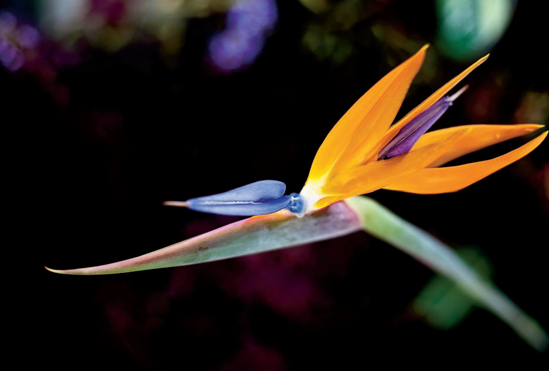
Figure 21.5. Bird of Paradise, from the Plant Exploration Room of the Conservatory (see A on the map). Taken at ISO 100, f/2, 1/125 second with a 65mm lens.
Another approach is to use larger aperture values to ensure that you get the entirety of the flower in focus. To try this, use apertures such as f/5.6-f/11, depending on how close you are to the subject and how large the subject is.
If you are using an Automatic mode, try using your camera's macro function. Many point-and-shoot cameras feature a macro function, which is commonly shown as a flower on a camera's dial or mode buttons. This function usually selects a small aperture value to blur out the background, and it may also set the autofocus on the closest subject it encounters.
Depth of field is a big factor in determining the look of plant and flower images, so using Aperture Priority will allow you to dial in an aperture to get a lot (a higher aperture value) or a little depth (a lower aperture value).
Note that your camera may be thrown off if it tries to use its Auto White Balance for these images due to an abundance of one color, such as green or yellow. Using the Sun or Daylight setting can work well to keep the colors looking natural, but each camera will require a little experimentation.
If you aren't adept at using flash, you generally want to avoid using it here (especially on-camera flash) and instead concentrate on taking advantage of where the nice light is. Using advanced flash methods such as off-camera flash and fill flash can be used to create light where it's needed as well. If you want to experiment without extra gear, try setting your camera to its Fill flash mode or setting your flash exposure manually (try turning its power all the way down to start).
The Botanic Garden changes with the seasons, but because there are indoor and outdoor areas, you can always find a beautiful exhibit to photograph here.
Both the Conservatory and the National Garden are open 10 a.m to 5 p.m. daily. Although photographing at the Conservatory early or late will let you use the beautiful morning or evening light, depending on the time of the year, it will also tend to limit the number of plants you will be able to photograph because the light will be hitting fewer of them. Therefore, going during bright daylight hours is a good idea.
The National Garden and Bartholdi Park are definitely lovely at all times, but when the sun is sweeping across its various gardens in the morning and evening, those areas are glorious.
You can photograph the Botanic Garden no matter what the weather because its outdoor and indoor areas offer the best of both worlds (see Figure 21.5). Overcast days are also a good option, because the entire sky will act as a soft box above the plants, inside and out.

